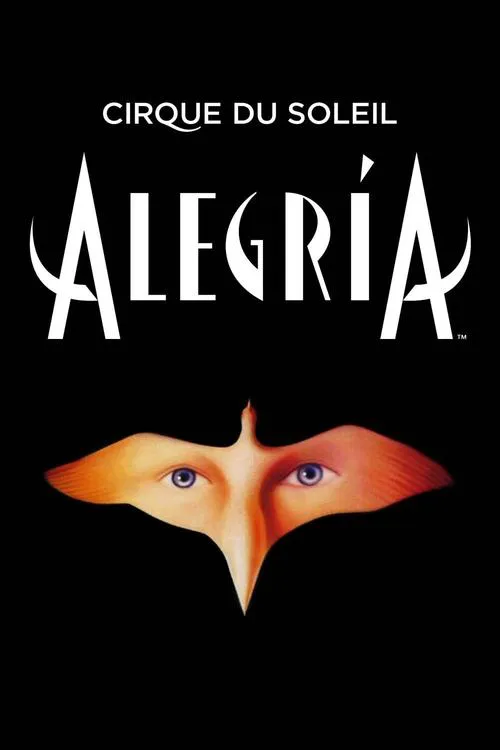Cirque du Soleil: Alegria

Plot
Set against a vibrant backdrop of color and music, Cirque du Soleil's Alegría transports the audience into a world of drama, emotion, and self-discovery. The show's name, which means "jubilation" in Spanish, captures the mood and atmosphere of the performance, where power, time, and social change are woven together in a rich tapestry of human experience. The story unfolds like a medieval allegory, where the characters of Alegría navigate the complexities of power and its passing. An ensemble cast of kings, queens, jokers, and fools takes center stage, each with their own tale to tell and struggles to face. Among them are the kings, once mighty and powerful, their authority now waning with each passing day as they struggle to come to terms with the loss of their dominance. The kings are aided by their loyal advisors and court jesters, who provide a glimpse into the inner workings of the royal court. These characters move fluidly between the world of pomp and circumstance and the harsh realities of life outside the castle walls. A poignant scene depicts a group of old kings and court jesters reminiscing about the past, their faces etched with the lines of time and experience, as they try to hold on to the glory of a bygone era. The characters of the children, representing hope and innocence, bring a refreshing sense of optimism to the narrative. They embody the power of growth and renewal, their laughter and playfulness serving as a counterpoint to the more ominous themes of decay and decline. These young characters also find themselves grappling with the weight of time, as they move from carefree youthfulness to the responsibilities and hardships of adulthood. Beggars, outcasts, and social outcasts populate the world of Alegría, their presence highlighting the tensions and inequalities of human society. Amidst the pageantry and spectacle of the royal court, they live on the margins, their struggles and hardships often overlooked or ignored. Yet, in their defiance and resilience, they become a symbol of the human spirit's ability to persevere in the face of adversity. One of the core themes of Alegría is the role of the clown, an enigmatic figure who seems to transcend the boundaries of time and social class. Clad in their elaborate costumes and masks, the clowns embody the fluidity and adaptability of the human condition, effortlessly moving between roles and personas. They embody the essence of the show's name, Alegría, finding joy and jubilation in the simple pleasures of life. Throughout the performance, Alegría is woven together through a rich tapestry of music, dance, and acrobatics. The set design is a striking combination of traditional and modern elements, transporting the audience into a world of wonder and enchantment. From the intricate patterns and motifs of the medieval-style costumes to the vibrant colors and dramatic lighting, every element of the performance works together to create a captivating atmosphere of drama and emotion. Ultimately, Alegría is a story about the cyclical nature of time, where power, youth, and age are intertwined in a delicate dance. As the characters navigate the complexities of their world, they grapple with the universal themes that bind us all together: our hopes, fears, and desires; our struggles and triumphs; our triumphs over time and adversity. In the end, it is the human spirit, embodied in the characters of Alegría, that emerges as the true hero of the story – a spirit that finds joy, jubilation, and meaning in the face of an ever-changing world.
Reviews
Recommendations




